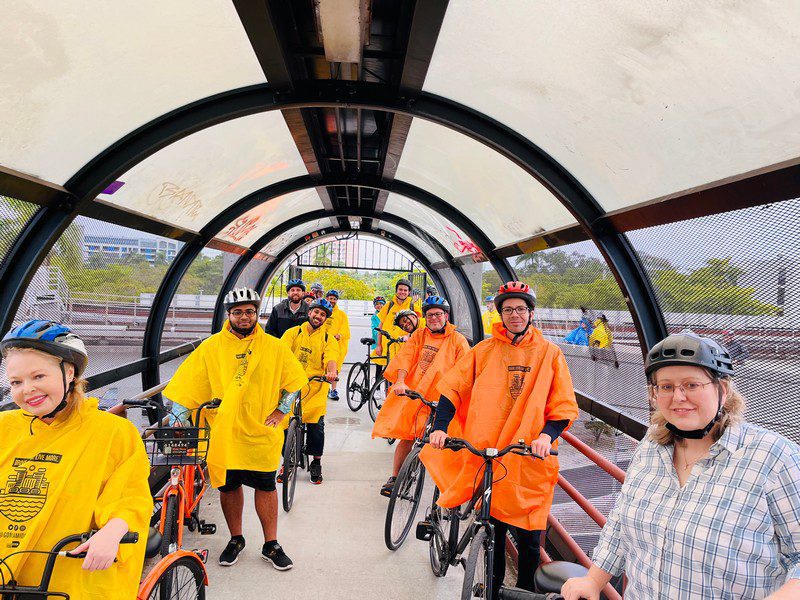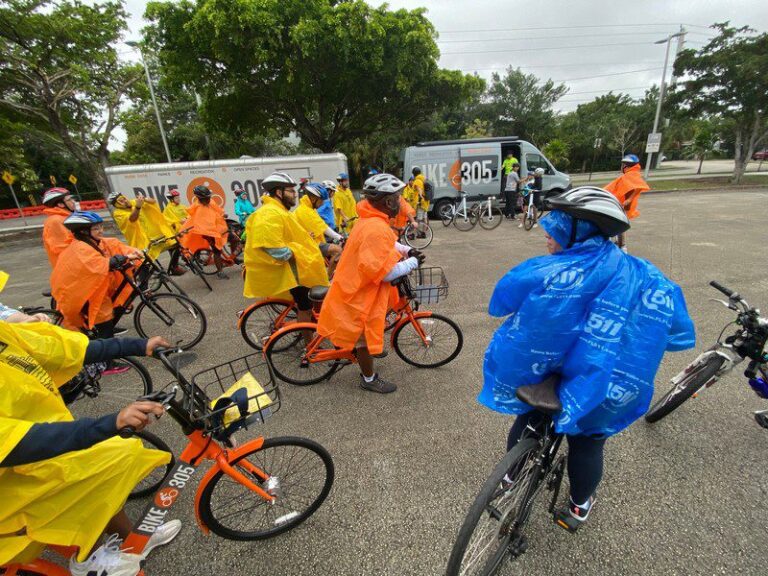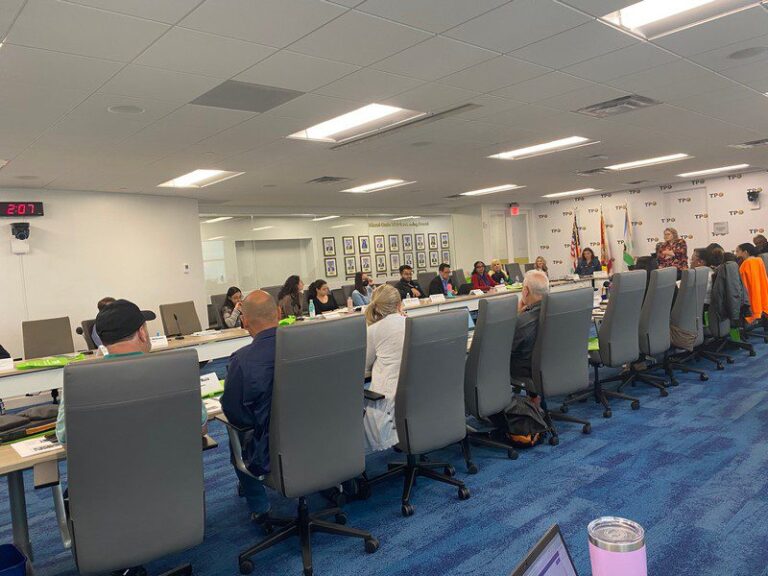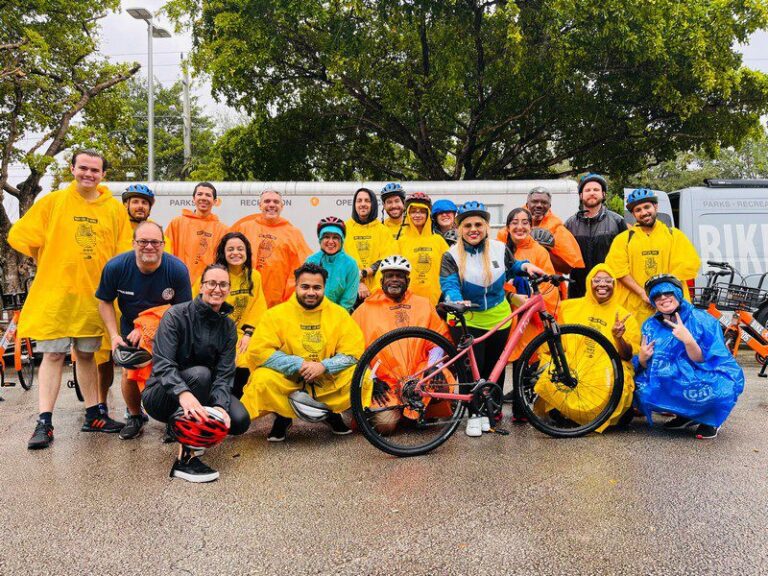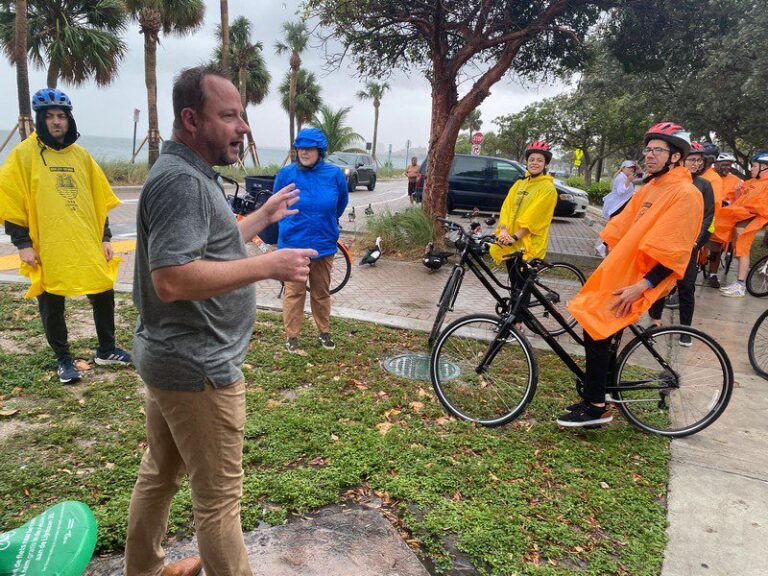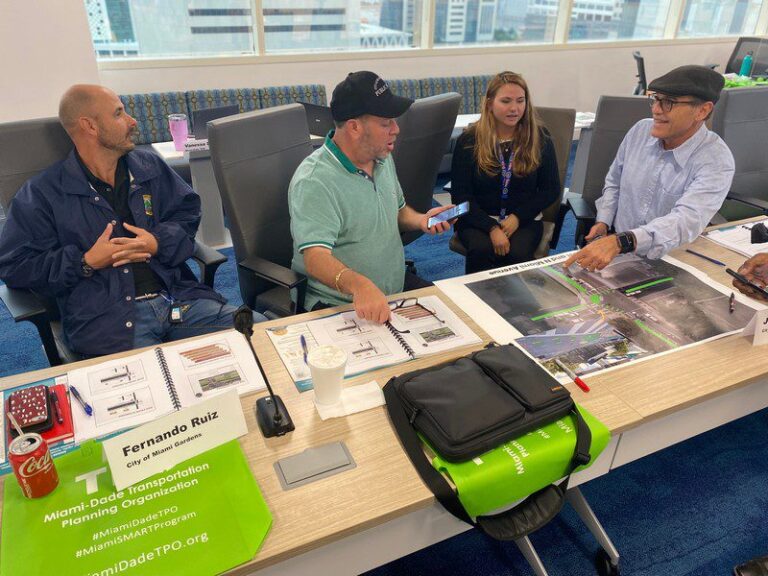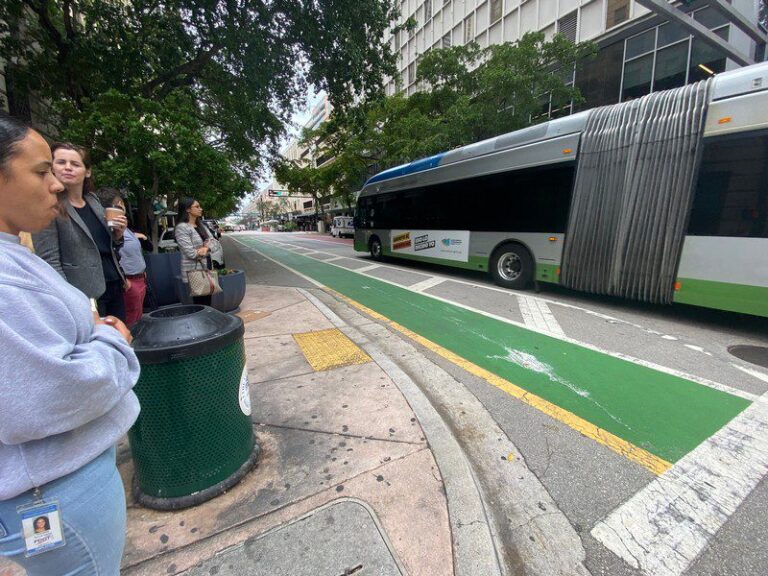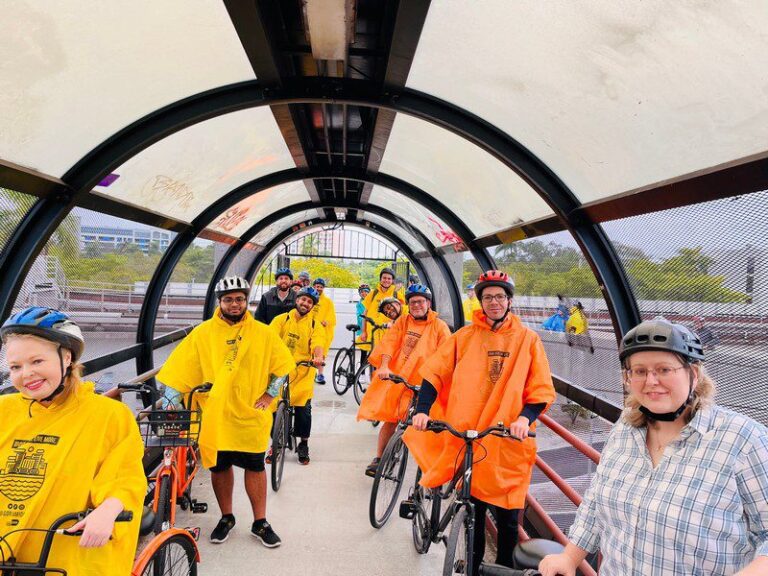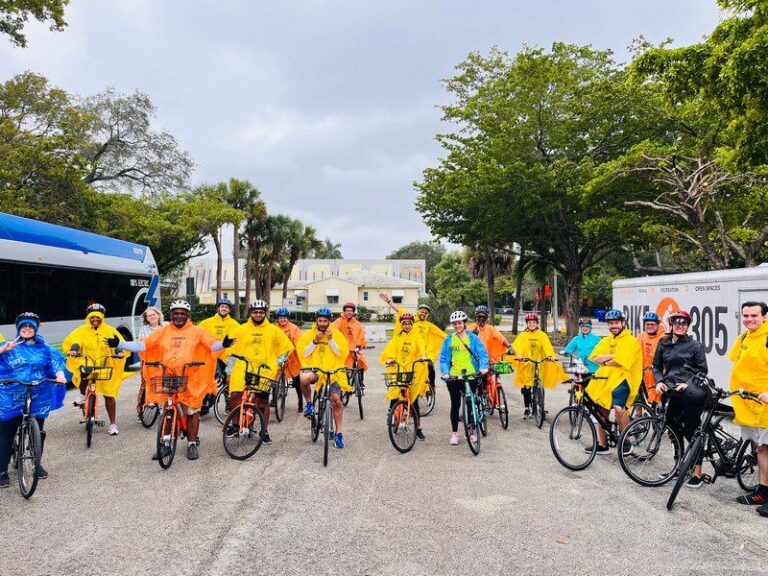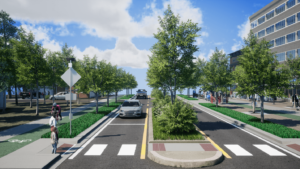DDEC recently participated in the Federal Highway Administration’s (FHWA) Designing for Bicyclist Safety Workshop, hosted by the Miami-Dade Transportation Planning Organization and the Florida Department of Transportation.
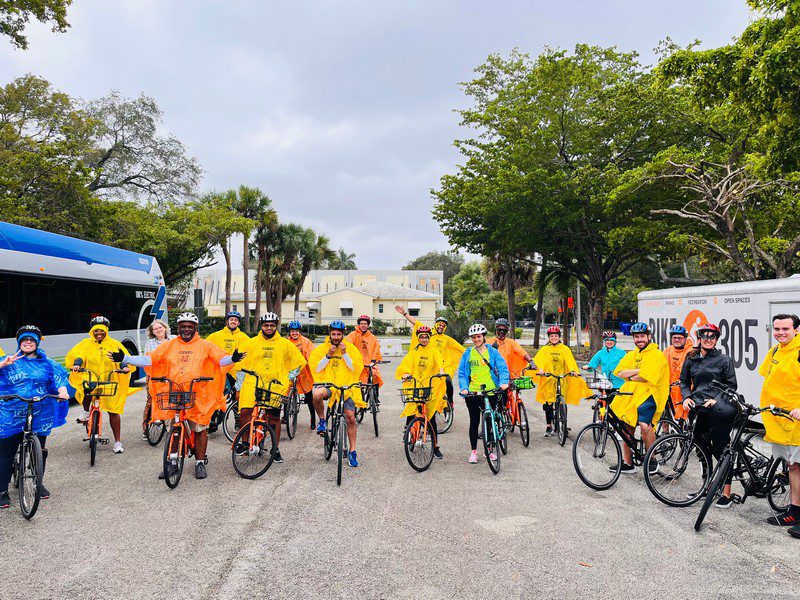 Approximately 40 transportation professionals, engineers, and urban planners turned out to the two-day informational workshop held at the Miami-Dade Transportation Planning Organization in downtown Miami. Attendees learned about bicyclist safety design principles. Additionally, they were provided with a foundation of knowledge needed to understand bicyclists’ needs and improve their safety through engineering and design strategies.
Each year, unfortunately, pedestrian and bicyclist fatalities comprise about 19 percent of all traffic fatalities with approximately 6,000 pedestrian deaths and 850 bicyclist deaths. Another 76,000 pedestrians and 47,000 bicyclists are injured in roadway crashes annually. Everyone would agree the numbers are more than staggering and concerning – they are downright unacceptable.
Pedestrian and bicyclist safety improvements depend on an integrated approach that involves engineering, enforcement, education, and emergency services. FHWA Resource Center instructors Brooke Struve and Keith Sinclair shared best practices with attendees, as did instructors Tiffany Gehrke and Brenda Young of the Central Office of the Florida Department of Transportation FDOT, and Jesus Fuentes of the Transportation Planning Organization and EXP.
The FHWA has several design guidelines for bicyclists:
Approximately 40 transportation professionals, engineers, and urban planners turned out to the two-day informational workshop held at the Miami-Dade Transportation Planning Organization in downtown Miami. Attendees learned about bicyclist safety design principles. Additionally, they were provided with a foundation of knowledge needed to understand bicyclists’ needs and improve their safety through engineering and design strategies.
Each year, unfortunately, pedestrian and bicyclist fatalities comprise about 19 percent of all traffic fatalities with approximately 6,000 pedestrian deaths and 850 bicyclist deaths. Another 76,000 pedestrians and 47,000 bicyclists are injured in roadway crashes annually. Everyone would agree the numbers are more than staggering and concerning – they are downright unacceptable.
Pedestrian and bicyclist safety improvements depend on an integrated approach that involves engineering, enforcement, education, and emergency services. FHWA Resource Center instructors Brooke Struve and Keith Sinclair shared best practices with attendees, as did instructors Tiffany Gehrke and Brenda Young of the Central Office of the Florida Department of Transportation FDOT, and Jesus Fuentes of the Transportation Planning Organization and EXP.
The FHWA has several design guidelines for bicyclists:
 Approximately 40 transportation professionals, engineers, and urban planners turned out to the two-day informational workshop held at the Miami-Dade Transportation Planning Organization in downtown Miami. Attendees learned about bicyclist safety design principles. Additionally, they were provided with a foundation of knowledge needed to understand bicyclists’ needs and improve their safety through engineering and design strategies.
Each year, unfortunately, pedestrian and bicyclist fatalities comprise about 19 percent of all traffic fatalities with approximately 6,000 pedestrian deaths and 850 bicyclist deaths. Another 76,000 pedestrians and 47,000 bicyclists are injured in roadway crashes annually. Everyone would agree the numbers are more than staggering and concerning – they are downright unacceptable.
Pedestrian and bicyclist safety improvements depend on an integrated approach that involves engineering, enforcement, education, and emergency services. FHWA Resource Center instructors Brooke Struve and Keith Sinclair shared best practices with attendees, as did instructors Tiffany Gehrke and Brenda Young of the Central Office of the Florida Department of Transportation FDOT, and Jesus Fuentes of the Transportation Planning Organization and EXP.
The FHWA has several design guidelines for bicyclists:
Approximately 40 transportation professionals, engineers, and urban planners turned out to the two-day informational workshop held at the Miami-Dade Transportation Planning Organization in downtown Miami. Attendees learned about bicyclist safety design principles. Additionally, they were provided with a foundation of knowledge needed to understand bicyclists’ needs and improve their safety through engineering and design strategies.
Each year, unfortunately, pedestrian and bicyclist fatalities comprise about 19 percent of all traffic fatalities with approximately 6,000 pedestrian deaths and 850 bicyclist deaths. Another 76,000 pedestrians and 47,000 bicyclists are injured in roadway crashes annually. Everyone would agree the numbers are more than staggering and concerning – they are downright unacceptable.
Pedestrian and bicyclist safety improvements depend on an integrated approach that involves engineering, enforcement, education, and emergency services. FHWA Resource Center instructors Brooke Struve and Keith Sinclair shared best practices with attendees, as did instructors Tiffany Gehrke and Brenda Young of the Central Office of the Florida Department of Transportation FDOT, and Jesus Fuentes of the Transportation Planning Organization and EXP.
The FHWA has several design guidelines for bicyclists: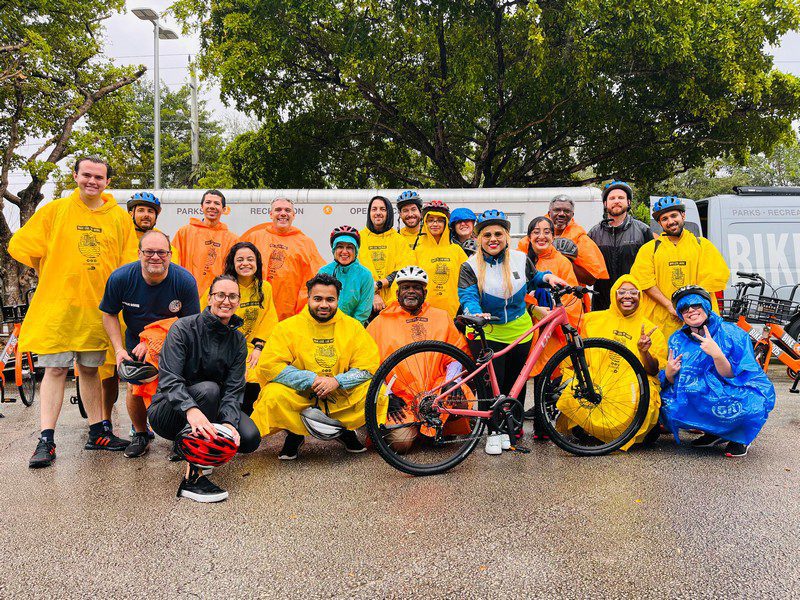
- Bicycle lanes should be located on both sides of two-way streets and should not be separated from motor vehicle lanes by curbs, parking lanes, or other obstructions.
- Gap cycles – Typical gap cycles use 10-12-foot gaps every 40-60 feet.
- Edge line rumbles – The most common design modification to accommodate bicyclists is the use of edge line rumbles instead of shoulder rumble strips.
- Bikeways – A bikeway is a facility intended for bicycle travel that designates space for bicyclists distinct from motor vehicle traffic. A bikeway does not include shared lanes, sidewalks, signed routes, or shared lanes with shared lane markings.
- Separated bicyclist lanes use vertical elements such as flexible delineator posts, curbs, or vegetation between the bicycle lane and motorized traffic lanes providing additional safety benefits.
- Raised intersections provide sidewalk-level crossings at each leg of an intersection. They encourage drivers to yield and provide pedestrians and bicyclists with a continuously accessible path of travel without grade changes.
- Cycle lanes – Whenever possible cycle lanes should be 2 m wide. This is particularly important when parents are accompanying children and cyclists overtaking other cyclists.
